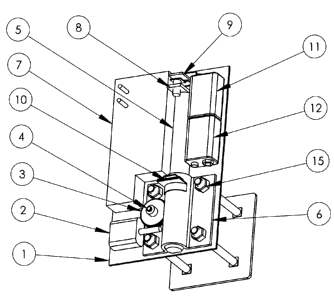Some of the information on this Web page has been provided by external sources. The Government of Canada is not responsible for the accuracy, reliability or currency of the information supplied by external sources. Users wishing to rely upon this information should consult directly with the source of the information. Content provided by external sources is not subject to official languages, privacy and accessibility requirements.
Any discrepancies in the text and image of the Claims and Abstract are due to differing posting times. Text of the Claims and Abstract are posted:
| (12) Patent: | (11) CA 2631521 |
|---|---|
| (54) English Title: | REMOTE CONTROLLED DEADBOLT DOOR LOCKING SYSTEM |
| (54) French Title: | SYSTEME DE VERROUILLAGE DE PORTE TELECOMMANDE A PENNE DORMANT |
| Status: | Deemed expired |
| (51) International Patent Classification (IPC): |
|
|---|---|
| (72) Inventors : |
|
| (73) Owners : |
|
| (71) Applicants : |
|
| (74) Agent: | NA |
| (74) Associate agent: | NA |
| (45) Issued: | 2012-06-19 |
| (22) Filed Date: | 2008-05-14 |
| (41) Open to Public Inspection: | 2009-11-14 |
| Examination requested: | 2008-05-14 |
| Availability of licence: | Yes |
| (25) Language of filing: | English |
| Patent Cooperation Treaty (PCT): | No |
|---|
| (30) Application Priority Data: | None |
|---|
The remote controlled deadbolt door locking system (the "unit") is designed to
be an add-on
locking mechanism for doors. The unit is designed to be mounted onto the
bottom corner of a
door, and when in the engaged position, it prevents said door from being
opened. The unit uses a
DC motor to move a shaft into a hole drilled into the floor. The unit is
mounted onto the door with
four carriage bolts through the door, and a mounting plate on the outside of
the door. The unit's
circuit warns the user if there is a low battery condition or battery failure,
and/or the shaft does not
fully engage upon closing. The operation of the unit is accomplished through a
keyless entry
device. In this way, the unit acts just like a simple dead bolt, but one that
can be locked from
outside.
La présente invention se rapporte à un système télécommandé de verrouillage de porte à penne dormant (l'unité), conçu en tant que mécanisme de verrouillage ajouté pour des portes. L'unité est prévue pour être montée sur le coin inférieur d'une porte et, à la position d'engagement, empêche l'ouverture de ladite porte. L'unité comporte un moteur à c.c. pour déplacer un arbre dans le trou foré dans le plancher. L'unité est montée sur la porte avec quatre boulons mécaniques traversant la porte, ainsi que sur la plaque de montage à l'extérieure de la porte. Le circuit de l'unité avertit l'utilisateur si la batterie est faible ou en panne, et/ou l'arbre ne s'engage pas complètement lors de la fermeture. L'utilisation de l'unité se fait par le biais d'un dispositif d'entrée sans clé. Ainsi, l'unité sert effectivement de simple penne dormant, mais cet élément peut être verrouillé de l'extérieur.
Note: Claims are shown in the official language in which they were submitted.
Note: Descriptions are shown in the official language in which they were submitted.

For a clearer understanding of the status of the application/patent presented on this page, the site Disclaimer , as well as the definitions for Patent , Administrative Status , Maintenance Fee and Payment History should be consulted.
| Title | Date |
|---|---|
| Forecasted Issue Date | 2012-06-19 |
| (22) Filed | 2008-05-14 |
| Examination Requested | 2008-05-14 |
| (41) Open to Public Inspection | 2009-11-14 |
| (45) Issued | 2012-06-19 |
| Deemed Expired | 2015-05-14 |
There is no abandonment history.
| Fee Type | Anniversary Year | Due Date | Amount Paid | Paid Date |
|---|---|---|---|---|
| Request for Examination | $400.00 | 2008-05-14 | ||
| Application Fee | $200.00 | 2008-05-14 | ||
| Maintenance Fee - Application - New Act | 2 | 2010-05-14 | $50.00 | 2010-05-14 |
| Maintenance Fee - Application - New Act | 3 | 2011-05-16 | $50.00 | 2011-04-13 |
| Final Fee | $150.00 | 2012-04-02 | ||
| Maintenance Fee - Application - New Act | 4 | 2012-05-14 | $50.00 | 2012-04-02 |
| Maintenance Fee - Patent - New Act | 5 | 2013-05-14 | $100.00 | 2013-04-18 |
Note: Records showing the ownership history in alphabetical order.
| Current Owners on Record |
|---|
| ALIFERIS, PETER |
| LEGENY, GABOR |
| Past Owners on Record |
|---|
| None |